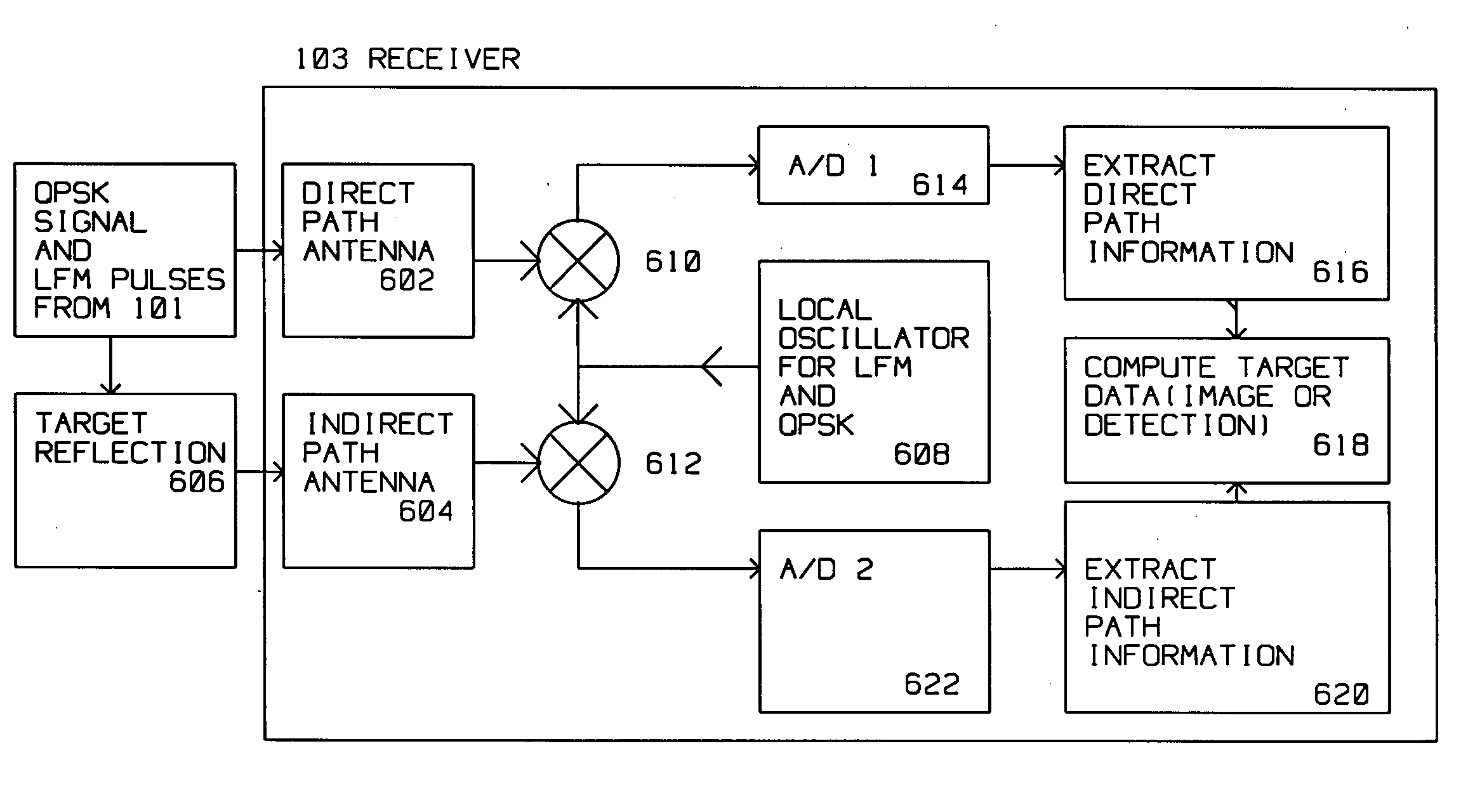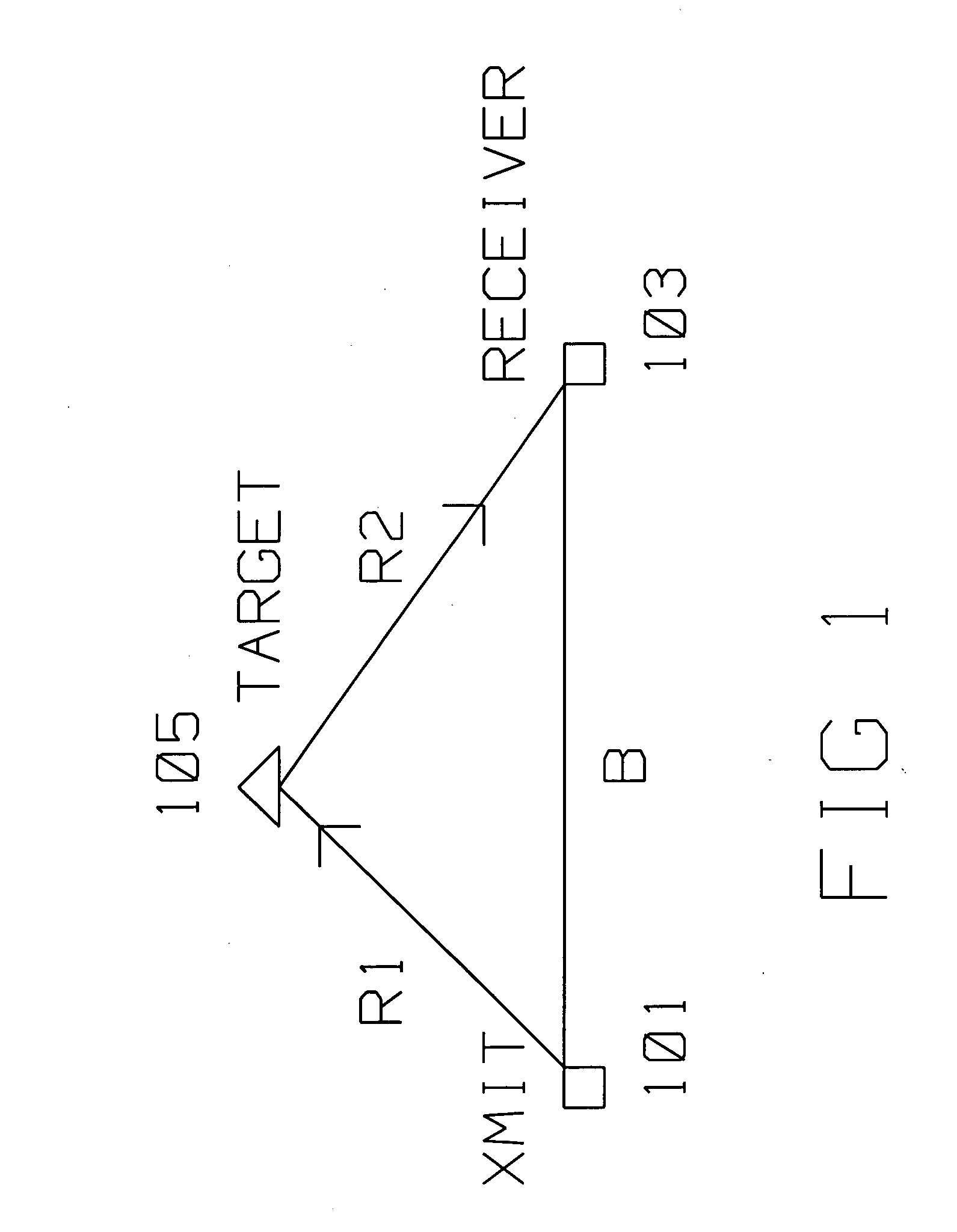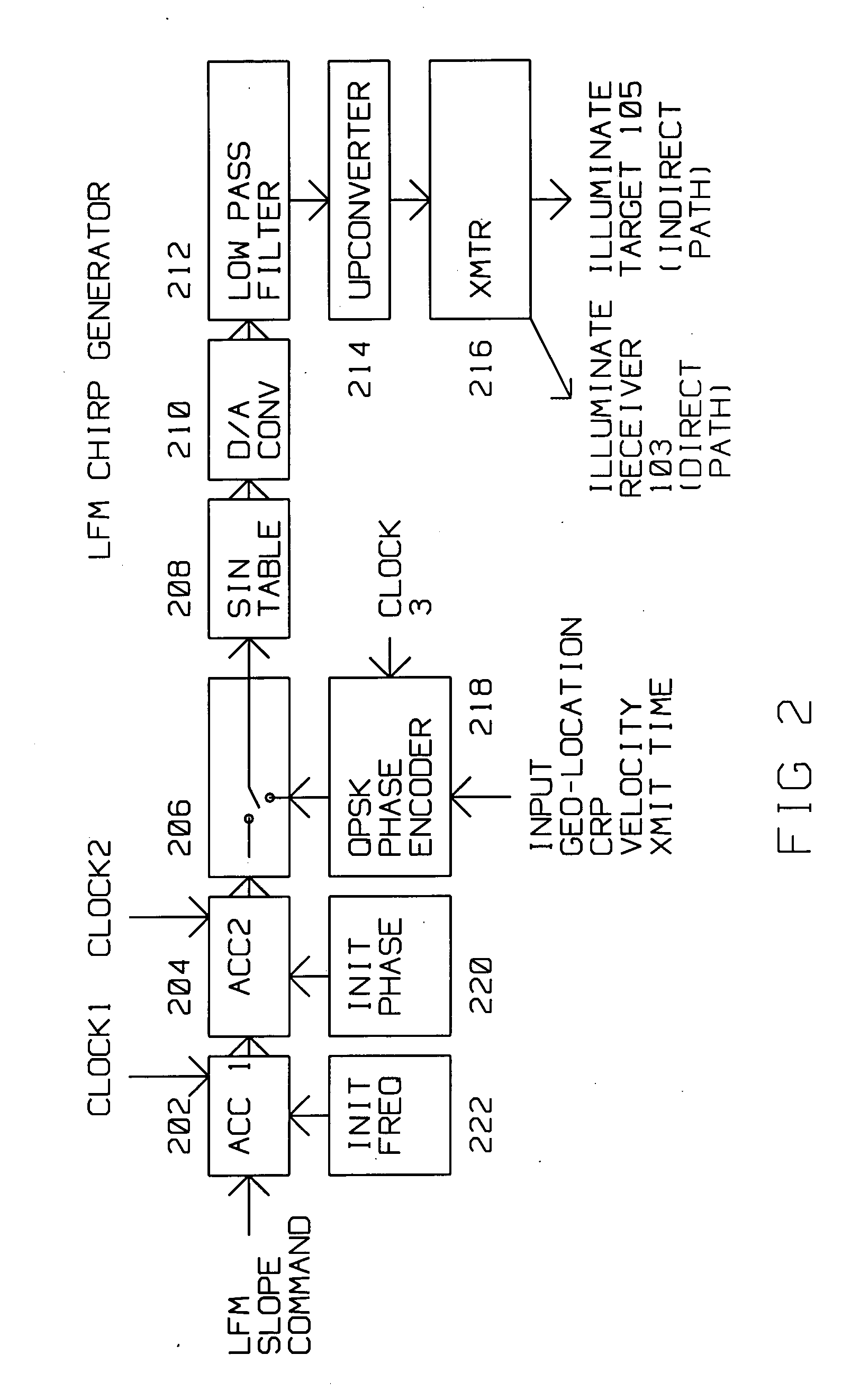Operational bistatic radar system synchronization
a bistatic radar and synchronization technology, applied in the field of bistatic radars, can solve the problems of limiting the performance of bistatic radar for intended applications, prone to failure of data links, and inability to synchronize receive and transmit functions
- Summary
- Abstract
- Description
- Claims
- Application Information
AI Technical Summary
Benefits of technology
Problems solved by technology
Method used
Image
Examples
Embodiment Construction
[0016] The present invention describes a method for synchronizing the receiver and transmitter (illuminator) in a bistatic radar. A high performance bistatic radar maintains overall bistatic system synchronization by:
[0017] 1) Maintaining receiver window control over both the direct path (i.e. illuminator to receiver range and the indirect path (i.e. illuminator to ground to receiver containing the target information) so that autonomous bistatic operation is possible and interference from the direct path is avoided. These two windows are non-overlapped in time because of different path lengths. Direct path signal is used to provide phase reference signals to the indirect path signal thereby helping maintain the bistate phase coherency.
[0018] 2) Maintaining bistatic phase coherency between physically separated local oscillators (LOs), i.e. the illuminator LO and the one or more receiver LO to allow for coherent radar return processing. Bistatic phase coherence is maintained for eac...
PUM
 Login to View More
Login to View More Abstract
Description
Claims
Application Information
 Login to View More
Login to View More - R&D
- Intellectual Property
- Life Sciences
- Materials
- Tech Scout
- Unparalleled Data Quality
- Higher Quality Content
- 60% Fewer Hallucinations
Browse by: Latest US Patents, China's latest patents, Technical Efficacy Thesaurus, Application Domain, Technology Topic, Popular Technical Reports.
© 2025 PatSnap. All rights reserved.Legal|Privacy policy|Modern Slavery Act Transparency Statement|Sitemap|About US| Contact US: help@patsnap.com



